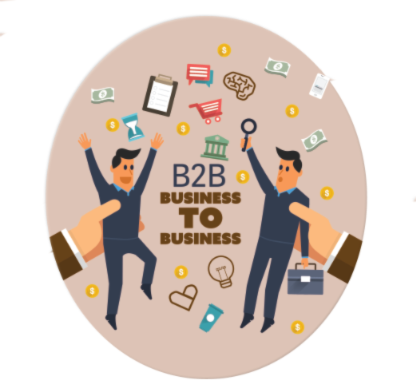Social Media
Subscription bombing and abuse prevention
A few weeks ago ProPublica was the victim of a subscription bomb attack. Julia Angwin found my blog post on the subject and contacted me to talk about the post. We spent an hour or so on the phone and I shared some of the information we had on the problem. Julie told me she was interested in investigating this further problem further. Today, ProPublica published Cheap Tricks: the Low Cost of Internet Harassment.
For those of us deeply involved in the issue, there isn’t too much that comes as a surprise in that article. But it’s a good introduction to folks who may not be aware of the existence of subscription bombing.
Julia does mention something I have been thinking about: abuse and anonymity online. Can we continue to have anonymous or pseudonymous identities on the Internet? Should we?
One of the challenges a lot of companies are struggling with is that anonymity can protect oppressors as well as their targets. How do we support “good” anonymity without enabling “bad” anonymity? I’ve always thought anonymity was an overall good and the fact that it’s abused sometimes didn’t mean it should be taken away. Banning anonymity online might seem to fix the problem of abuse, except it really doesn’t and it comes with its own set of problems.
Let’s be honest, these are hard questions and ones that do need to be addressed. A lot of the tools abuse and security desks currently have rely on volume of complaints. This can result in the targets getting shut down due to false complaints while the perpetrators keep their accounts open. It means subscription bombs can target a few individuals and occur undetected for months.
Big companies in Silicon Valley love to rely on their algorithms and machine learning and AI and code to automate things. But the automation only works after you create working processes. Throwing code at the problem doesn’t work unless you have a picture of the scope of the problem. And a reliance on code ends up with Facebook asking people to upload nudes of themselves to prevent nudes on Facebook. Likewise, throwing cheap labor at the problem isn’t a solution, either.
I don’t have the answers, I don’t think anyone does. But we need to think harder about these problems and address them sooner rather than later. The internet is too important to let abusers break it.
Social marketing
The following showed up in my mailbox a few moments ago
I commented to Steve that social marketing was about connecting with people, and businesses aren’t people. That’s why social marketing for B2B is hard: there are no people involved. Or, as he pointed out, B2B in the social space is bot to bot marketing.
Of course, there aren’t literal bots behind most brands. In the B2C space, brands have cultivated a social media presence that personifies the business in a way that appeals to their consumers. But that’s the brand projecting onto people and responding to people. When a business tries to connect to a business, it’s just two puppets talking.
Sure, there are small businesses where there isn’t the case. But generally businesses aren’t on social media to consume marketing. They’re on social media to generate marketing. They aren’t targets because you can’t market to a puppet.
Harvesting Addresses from LinkedIn
There seems to have been an uptick in the number of folks harvesting addresses from their LinkedIn contacts and adding them to mailing lists. I’ve been seeing this in my own mailbox. I’m getting added to different lists and because I used a tagged address I know these folks are harvesting from LinkedIn.
This behavior is really rude. Just because someone accepted your contact request on LinkedIn, doesn’t mean they want to be added to any mailing lists you may have. Let’s be honest, some people have hundreds or thousands of LinkedIn contacts. They’re not going to want to get mail from all of them.
This behavior risks your ESP account. I know of ESPs who have disconnected customers for importing all their LinkedIn contacts.
Of course, there are ways to effectively use your LinkedIn contacts. The short version is think about what you’re doing and how your mail will be received. Don’t grab all your contacts, be selective about who you choose. Have too many contacts to go through manually? That’s not an excuse, in fact, it’s an even bigger argument for not becoming a spammer.
I’ve previously written things you must consider when sending bulk mail to people who have connected with you on social networks.
Looking forward
The nice folks over at Sparkpost asked me and other email experts for some thoughts on what we think the most important issues in email will be in 2016.
I do think security is going to be a major, major change in delivery. From what I’ve seen there’s been a shift in the mindset of a lot of people. Previously a lot of folks in the email space were very accommodating to old systems and unauthenticated mail and were not quite ready to cut off senders that didn’t meet modern standards.
There were a lot of people who didn’t want to take any action that would break email. There are still a lot of people who think that breaking email is a bad thing and changes should be backwards compatible.
Then people started realizing not every change had to be backwards compatible.
There are a few reasons I think this attitude shift happened.
Strangers, connections and social media
One of the major challenges of social media is letting people connect with folks they don’t know while preventing abuse. Most of the major social networks are trying.
Let’s look at LinkedIn and the tools they give users to stop abuse. Overall, they are pretty good about stopping their platform from being abused, but don’t have many processes to stop folks from harvesting connection addresses off LinkedIn and then adding those addresses to marketing lists. Does it happen frequently? No. But it does happen.
I have a pretty liberal “accept an invite” policy on LinkedIn. If people want to connect with me there and they have real profiles and they’re in a relevant space, I generally accept their invites. This means there are times when I connect with people I don’t know. I’m OK with this, LinkedIn is a great way to meet an interact with colleagues. It also means that sometimes people connect with me, take my information and add it to their marketing lists.
This morning I got an invite from Greg Williams. The name and profile looked like one I’d seen before, so I dug through my mail to see why this raised my hackles. I figured it out. Greg is president of some Tuscon area scholarship fund. A year or so ago he decided to ask all his LinkedIn connections to donate thousands of dollars to his non-profit. I decided this was not a connection I really needed on LinkedIn and removed him.
I don’t really have a connection with Mr. Williams. We didn’t go to the same schools, we don’t work in similar fields. LinkedIn tells me that we have two connections in common. I know nothing about him except that the last time I connected with him on LinkedIn he decided to take this as an invitation to spam me with money requests for his foundation. A foundation he didn’t really tell me anything other than “we give money for scholarships.”
Even more crazy is that Mr. Williams sent me an invite that says “I trust you and I’d like you to be part of my LinkedIn network.” I’m not sure who you are or who you think I am, but I don’t think you know me well enough to trust me.
I’m not against reconnecting with Mr. Williams again, but I want to be sure he understands that just because we connect on LinkedIn doesn’t mean I want to be added to his begging list. I looked for a way through LinkedIn to send Mr. Williams a response. But I can’t. My two choices are to ignore him or report spam. I think I’ll ignore him, for now.
One thing LinkedIn does to stop this problem is get feedback from users. When I click Ignore on the invite I get the opportunity to tell LinkedIn “I don’t know this person.” Hopefully, telling them I don’t know this person will stop future invites.
Social networks are a great thing and allow people to connect and create communities and interact with one another. Stopping users from abusing other members of the network is an important part of that community building framework.
Social media the Home Depot way
I’ve been following Richard the Cat on Twitter for a while. It’s the story of a family and their trials and tribulations with their yard as told by their cat.
The twitter feed (and Richard’s tumblr) are a product of the Home Depot marketing department. And it’s great. Richard has awesome comments on his humans and their struggle to create a happy yard. The tweets are low key and not overly home depot branded, but every Richard tweet I see, I think about the yard and things we might need from Home Depot.
And, of course, who on the internet doesn’t love a cat meme?
To my mind this is one of the better examples of brand social media. There is a theme. The tweets and tumblr does remind followers of the brand – Richard is an orange cat after all. The process is participatory, followers can upload cat photos on the Tumblr and tweet with Richard on Twitter.
Social media is social; a two way street. A lot of brands fail with the social part in that they treat it as a one way street. Home Depot doesn’t do that with Richard.
Social invading everything
I discovered, inadvertently, that there is a business networking site modeled after dating site. If you’re selling something you go on the site and register as a seller. If you’re buying something you go on the site and register as a buyer. Buyers can post RFIs and sellers can respond.
Decent enough business model, they’ve even fleshed it out so the site itself acts as an invoicing and billing mechanism.
That’s how I discovered it, one of our very large international telco customers decided they wanted to use this site for billing. Many large telcos expect vendors to use their proprietary site, so I wasn’t that surprised when they asked. And, given they’re international being able to bill them electronically just means I don’t have to remember to use the international stamps.
At the behest of our customer, I signed up at the website. It’s like most social networking sites, create a profile, categorize yourself, make everything public. The thing is, I don’t want to use this site to find new customers. I am just using it because one of my current customers is expecting it. Don’t get me wrong, Abacus is a great product and our customers are extremely happy with it, but it’s pretty niche. It’s not something that’s going to be searched for on a generic website.
I thought that when I set my profile to private that would be some sort of signal to keep me out of the main directory of the site. This morning I realized that wasn’t true when I got a bunch of emails telling me about all these companies looking for “business software” (the closest category I could find).
Getting a bunch of irrelevant mail was annoying enough. Even worse, there was no unsub link in the email. Eventually, I discovered an entire page of email options that were not made clear to me up front. I also sent mail to support and suggested that they talk to their lawyers to clarify whether their opt-out option was consistent with CAN SPAM. I’m pretty sure it doesn’t, but I am not a lawyer.
To the company’s credit, they did have good support and my questions through support were answered in a timely fashion. One of their support reps even called me on the phone to clarify what it was that I wanted to happen and walk me through their email options. She was very upfront about yes, they opted everyone in to all the mail at the very beginning of the process. “We’re like match.com for businesses!”
I’m sure there are some businesses that will find this service to be great. But it’s not what I want or need. Despite the fact that their support was so helpful, I don’t have a great feeling about this company. It seems a bit dishonest that I thought I was signing up for a billing portal, but was actually joining “match.com for businesses. Why couldn’t they make that clear in the 7 emails in 2 days “inviting” me to sign up?
I know I’m a little more sensitive to bad mailing processes than most people, but this was quite an unpleasant experience from the multiple identical emails and reminders before I signed up to the irrelevant stuff I got afterwards.
The challenge of integrated marketing
There are dozens of ways for companies to interact with customers these days. Business Insider recently posted this infographic, only to realize that they’d left off Pintrest.
Read MoreSocial marketing
I don’t follow many brands on twitter or facebook. Those that I do are local businesses we actually shop at. It’s been interesting watching these local groups use the social networks to market.
One is The Milk Pail Market in Mountain View. They have a reasonably active Facebook page. How have they been using social marketing?
Brand engagement in social media
Adobe has a good post up about consumer reaction and interaction with brands in social media like Twitter and Facebook.
Read MoreSocial networks and bulk email
There’s been a bit of a commotion on Twitter and over at J Caldwell’s blog about Al’s reaction to someone harvesting his address off LinkedIn and then adding that email address to his company’s marketing / newsletter database. Al objected to getting the mail, the person who did this shot back that it wasn’t spam, there was lots of arguing both over twitter and on the blog post.
This also recently happened when a well known email marketer took all 500+ of his Linked In contacts (including me) and added them to his corporate Christmas card list. His behaviour also created a bit of a stir, although it was a little less public.
That mailing was interesting, because a number of people who received the card thought this was the Best Use of Email, EVER! Some of them went so far as to opine “How could ANYONE not like this mail? What are they, Scrooge?” Well, actually, I found the mail irrelevant and a bit annoying. I have to admit I would have been a lot less annoyed if I knew this was a one time thing. However, in order to comply with CAN SPAM he included an opt-out. Which lead to some head scratching: have I been added to their full list? Am I going to get their newsletter from now on? Do I have to opt-out? What was he thinking?
Watching both of the above situations go down I have come up with a list of things you must consider when sending bulk mail to people who have connected with you on social networks.
Is social media a laughing matter?
I really love my job, but sometimes I miss academia, research and science. One of the ways I stay somewhat connected to that world is reading Scienceblogs (and the new Scientopia site). A few weeks ago my worlds collided when one of the librarians at Scienceblogs posted a Friday funny: 5 signs you’re talking to a social media douchebag.
Read More